
When incorporating two sofas or couches in a living room, the first step is understanding furniture arrangement basics. The size and proportions of the room need to be considered to allow enough walking space between and around the couches. Identifying the room’s focal point, whether the fireplace, entertainment unit or a statement window, will provide cues on optimal furniture placement. The goal is to create a layout that promotes conversation and interaction while maximizing seating capacity and aesthetic appeal.
Create visual harmony between couches by repeating colors, patterns or materials. Clever small living room layouts use petite loveseats or slipped-covered sectionals. Floating couches away from the walls amplify the feeling of openness. Above all, ensure adequate walking room around and between couches for seamless circulation.
There are endless possibilities for artfully arranging two couches or sofas in a living room. Here are some popular and effective ways to pull off this trend.
The Basics of Couch Arrangement
When arranging two couches or sofas in your living room, take stock of the room’s size and proportions. Measure the room to get a clear idea of the physical space you are working with. This will determine how far apart you can place the two couches without making the room feel overly cramped. Generally, leave enough breathing room of at least 36-42 inches between the couches to allow for comfortable movement and traffic flow.
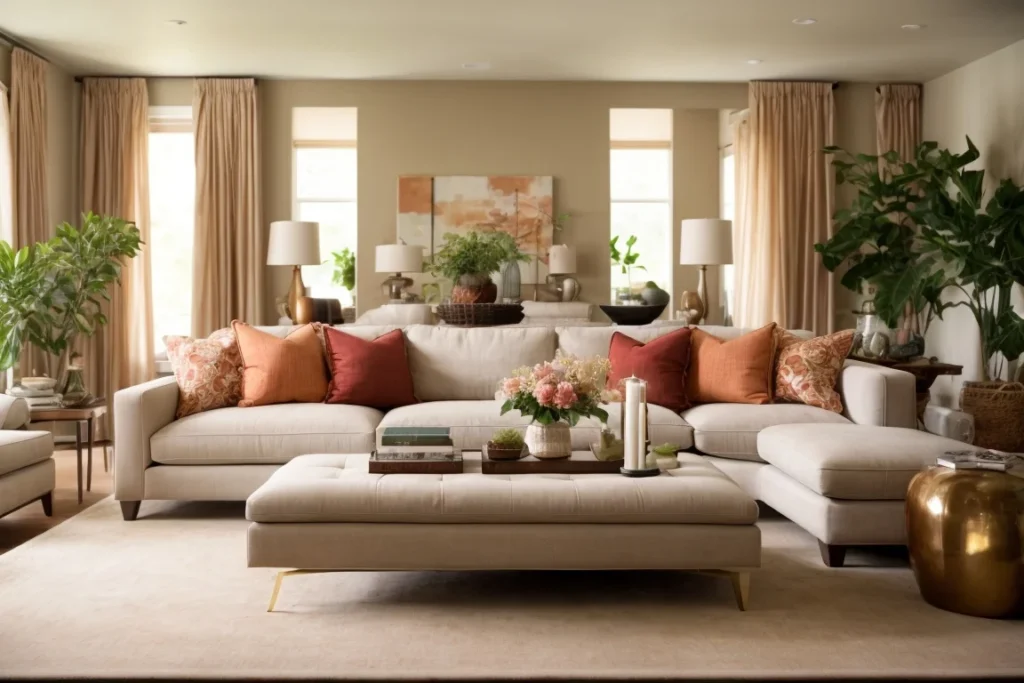
Also assess the shape and layout of the room. Long, narrow living rooms are best furnished with couches against the longer walls, while wider spaces accommodate couches on adjacent walls. Note any architectural details or decor elements that already serve as focal points, such as a fireplace, large window or statement lighting fixture. Identifying these areas will influence the optimal furniture placement. The goal is to arrange the seating to face the room’s natural focal points whenever possible.
Conversational Seating: Face the Couches Towards Each Other
One classic and effective way to arrange two couches or sofas is to position them opposite each other, facing inward. This creates a conversational seating area in the center of the room, allowing people to face each other directly while interacting and entertaining. The main advantages of this symmetrical layout are facilitating eye contact and easy conversation between guests.

Place a coffee table in the middle of the two facing couches for additional functionality. This provides a convenient shared surface for serving food and drinks when hosting get-togethers. The coffee table also helps anchor the seating area. Choose a table with a narrow rectangular silhouette to maintain enough legroom, about 18 inches between the edge of the table and the couches.
When executing this conversational layout, leave enough space between the two couches. A minimum of three feet is ideal for easily walking around the seating. This centrally positioned seating arrangement works especially well in large, open concept living rooms. Drawing the eye towards the middle helps define the space.
Divide and Conquer: Put Couches Back-to-Back
Placing the two couches back-to-back for expansive living rooms can effectively divide and zone the large open space. Positioning the couches in this way helps create two separate seating areas within the same room. This layout provides a natural visual barrier, allowing for more intimate spaces on either side.

Consider placing a long console table behind the two couches to make the most of the back-to-back arrangement. This serves both an aesthetic and functional purpose. A bold console table provides a beautiful backdrop, anchoring the seating areas. It also offers storage for lamps, books and decor behind the couches. Another optional decorative touch is mounting sconces or pendant lights above the console table to provide task lighting on both sides of the seating areas.
The back-to-back layout is ideal for large, cavernous spaces as it instantly provides two defined zones. It also ensures the seating areas maintain a conversational vibe instead of forcing guests to crane their necks around the room. Add a rug underneath each couch to further distinguish the two separate spaces.
Efficient Corners: Arrange in an L-Shape
For an open floor plan living room, arranging the two couches or sofas in an L-shape is an efficient use of space. This corner seating design utilizes the dimensions of the room beautifully. An L-shaped layout is especially well-suited for a living area connected to an open dining space, as it promotes movement and traffic flow between the two zones.
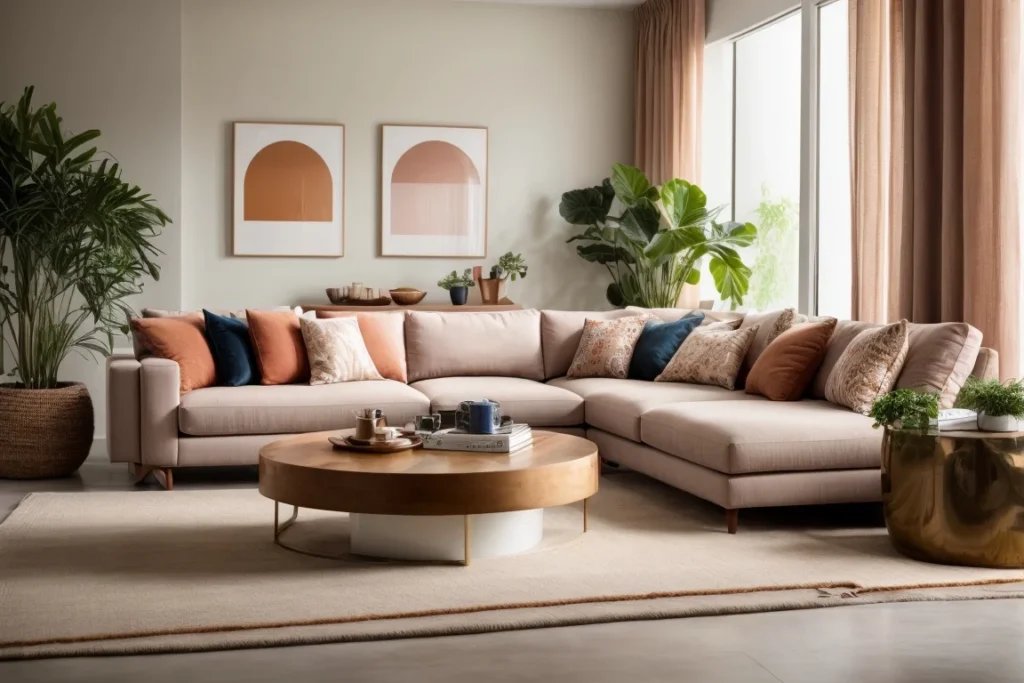
The main advantage of the L-shaped couch arrangement is keeping the layout open and airy, while defining the seating area. One couch can be placed on the longer wall with an identical couch nestled perpendicular, creating a clear focal point in the corner of the room. This also leaves plenty of open floor space for coffee tables to hold snacks and drinks.
Use the interior corner where the two couches meet for additional functionality to place a small end table. This is the perfect spot for a lamp or small decorative accents. An end table here provides surface space easily accessible from both couches. When executing an L-shaped layout, be conscious of leaving enough space around and between the couches. About three feet of breathing room allows people to comfortably enter the seating area or walk behind the couches.
Open Up Space: Float the Couches
Strategically floating both couches away from the walls makes a living room feel more spacious and open. Pulling the couches into the center of the room diverges from wall-hugging arrangements for a laidback vibe. This floating layout also encourages movement and flow around the full perimeter of the seating area.
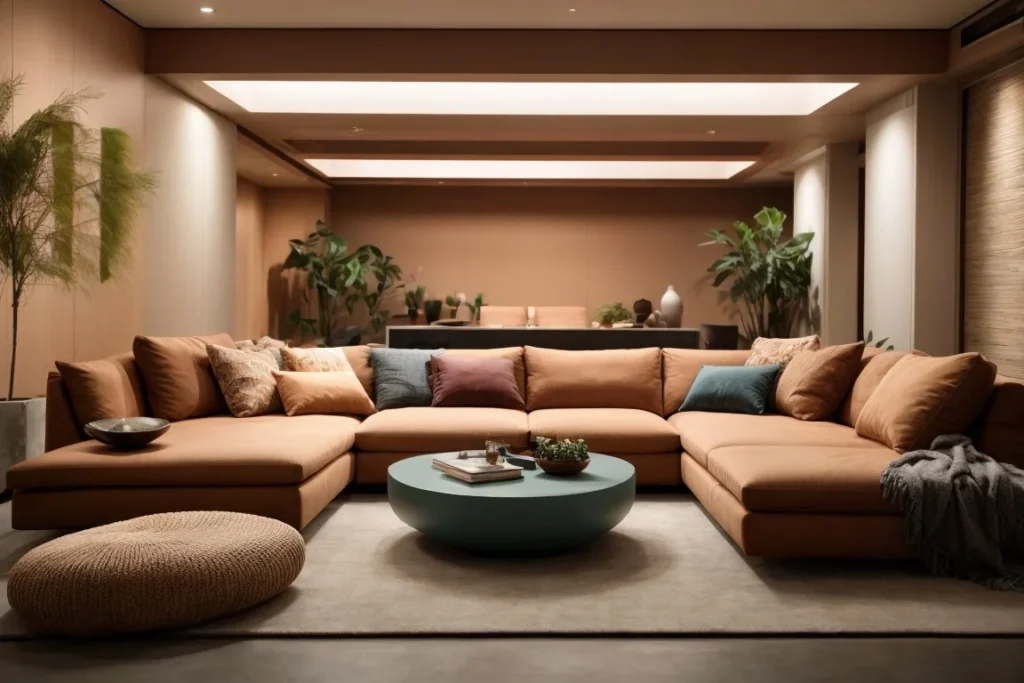
When opting for a floating couch arrangement, pay special attention to leaving adequate wiggle room around the pieces. Both couches need enough breathing space without a wall or anchor on one side. Plan for at least three feet of clearance around the perimeter of the couches. This allows people to easily walk around the seating area without bumping into coffee tables or tight corners.
Resist pushing the floating couches too close together in the center of the room, as this can feel disjointed. Maintain a minimum of five feet between the couches to keep the visual lines open and airy. The ample gliding room also makes floating sofas ideal for households with pets and kids.
Add Visual Interest: Go Diagonal
Arranging the two couches at an angle makes a dynamic visual statement for living rooms with a squarish footprint. Positioning the couches diagonally breaks up the rigid lines of furniture placed against the walls. This layout adds appealing asymmetry to the room.
The diagonal couch placement also leads the eye around the room, creating visual interest from every viewpoint. This works especially well if the architecture has strong linear lines or boxy shapes. Angling the couches adds an artistic, gallery-like feel.
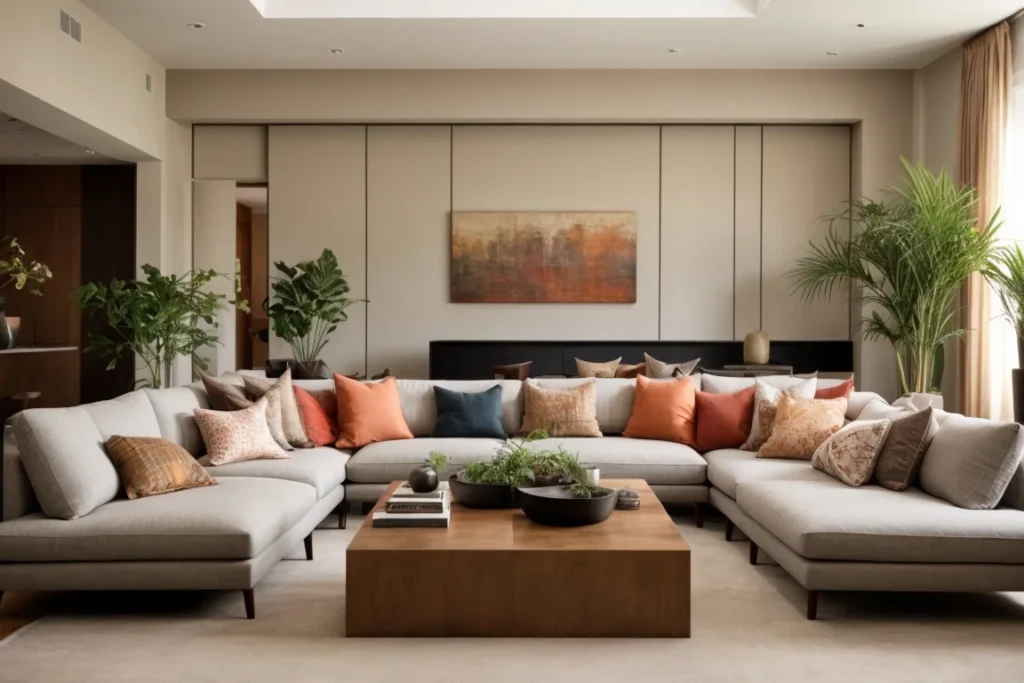
When executing the diagonal layout, maintain enough space between the two couches for walking between them. Plan for at least four feet between the front edges of the couches. Diagonal furniture arrangements can sometimes feel disjointed or awkward if the proximity between pieces is too tight. Leaving breathing room between the angled couches allows people to easily enter the seating area from different access points.
Maximize Seating: Layer in Accent Seating
Adding accent chairs or ottomans alongside the main living room couches for large families or frequent entertainers maximizes seating capacity. This additional accent seating can be naturally layered around the perimeter of the main seating areas.
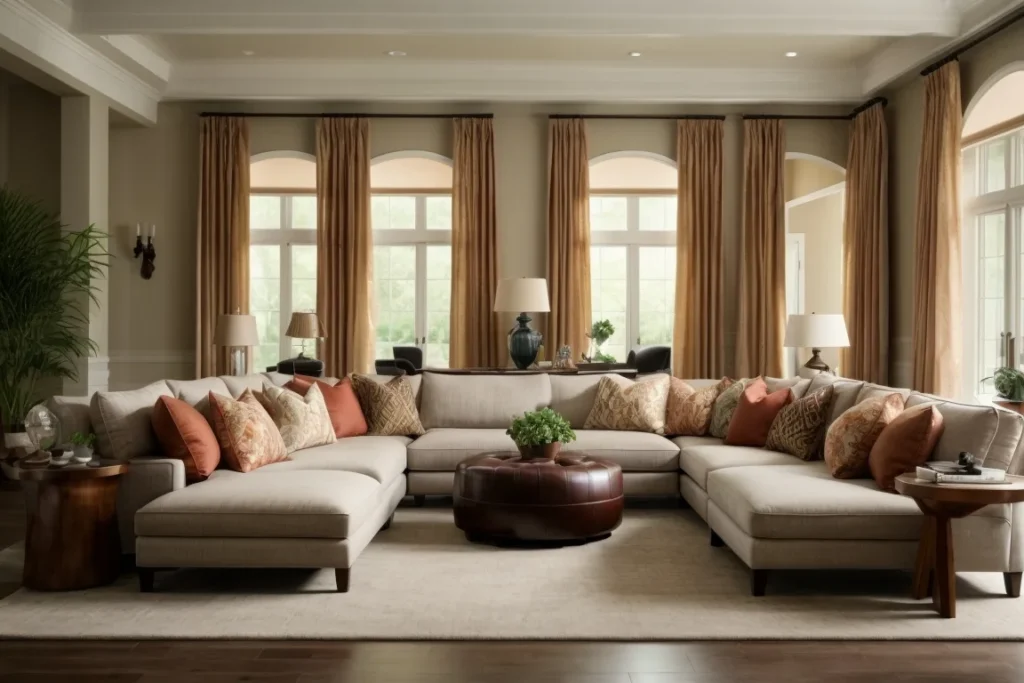
Nestle cozy accent chairs near the ends of the couches to create more intimate conversational nooks for small groups. Ottomans also provide extra modular seating, which can be readily moved to different spots. Accent seating adds ample overflow capacity around the central couches for sizable gatherings.
When incorporating accent seating pieces, opt for styles and silhouettes that complement the lines of your main living room couches. Repeating design elements like tapered legs, track arms, and cushion tufting helps aesthetically tie the accent chairs and ottomans to the core seating. Maintaining a cohesive style between main and accent seating pieces gives the layered layout a polished, collected look.
Cohesion is Key: Use Similar Styles
Cohesion between the styles and designs is paramount when combining two couches or sofas in one living room. Carefully selecting pieces that share unifying details prevents the arrangement from feeling disjointed or mismatched. Even if you opt for two different silhouettes, repeating just one or two design aspects helps bridge the gap aesthetically.

Some examples of ways to create cohesion include choosing couches in the same color family, repeating similar leg shapes, or using couches with analogous design lines. Another cohesive option is to pick couches in contrasting colors but with identical fabric patterns or texture. Maintaining visual harmony through at least one aspect of form or finish helps the pairing feel intentional.
Mixing and matching works best when the two couches share a few coordinate details while maintaining their distinct silhouette and style. For example, a curvy rolled arm sofa paired with a square-armed couch with matching tapered wood legs and piped cushions feels cohesive yet unique. When thoughtfully executed, a mix and match sofa pairing adds compelling layered style to a living room.
Textural Harmony: Repeat Patterns or Textures
In addition to style and color, repeating decorative textural elements between both living room couches promotes a unified aesthetic. Use pillows, throws and area rugs to interweave matching visual motifs between the two seating areas.
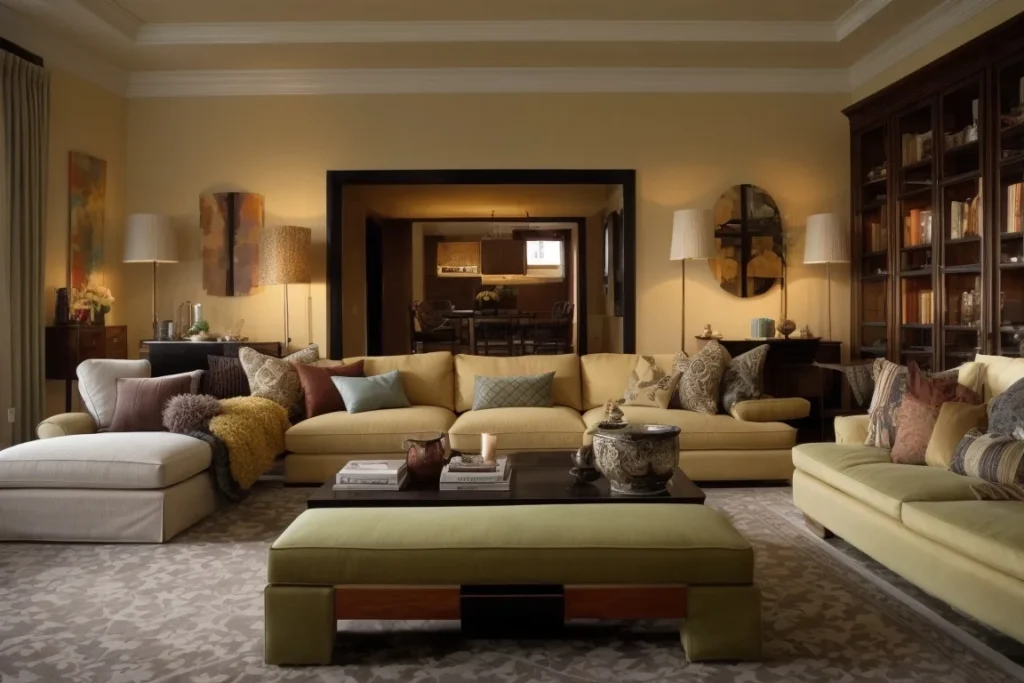
Introduce pillows in a shared geometric or floral pattern on both couches to tie them together visually. Similarly, draping textural throws made from a coordinating knit or fabric over the seating adds continuity.
An area rug with dominant colors pulled from each couch grounds the arrangement while providing textural harmony between the pieces. When decorating with two different sofa silhouettes, a rug with an organic abstract pattern or subtle color blocking effortlessly bridges the gap.
Practical Considerations: Mind the Traffic Flow
When executing any two-couch layout, the practical consideration of traffic flow through the space should remain in mind. No matter the arrangement is aesthetically pleasing, interruptions in natural movement around the room make the space feel disconnected and awkward.
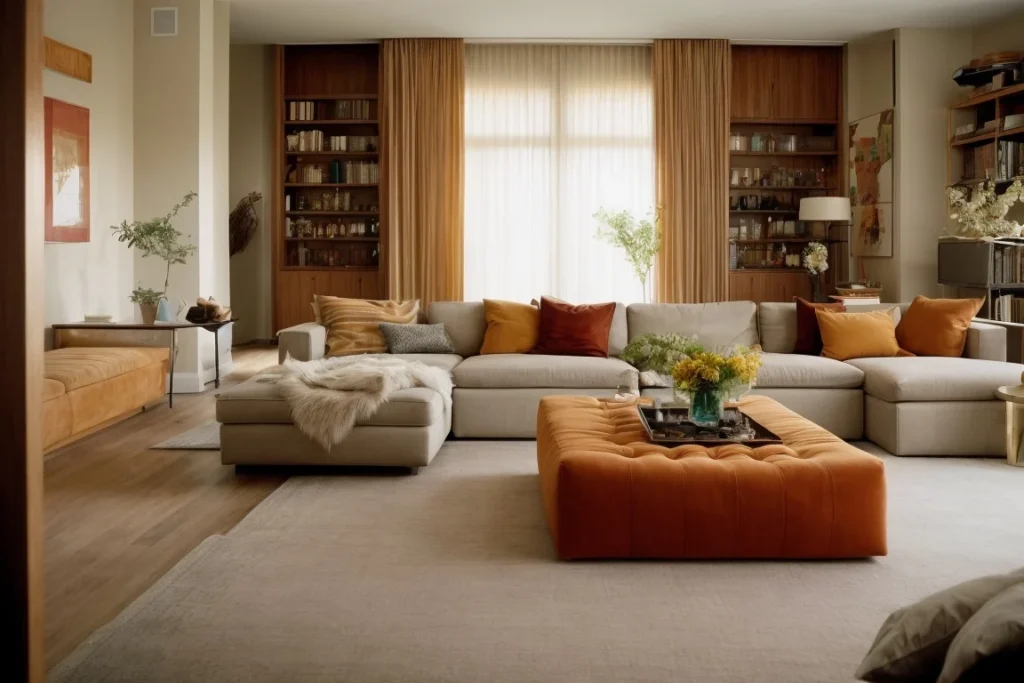
Always allow a minimum of three feet behind and around the perimeter of the couches. This gives people ample space to enter and comfortably walk around the seating areas. Measure thoroughly and use tape to map out the couches’ footprints before placing them in position.
For open floor plan living rooms, ensure a minimum of five feet between the couches and opening into adjoining spaces. This allows unencumbered movement between living spaces and prevents a bottleneck effect. Marking boundaries is also key for households with young children or pets to avoid accidental collisions.
TV and Couches: How to Arrange 2 Couches in a Living Room with a TV
Incorporating a television into a living room with two couches requires careful planning to optimize TV viewing and conversational zones. The main priority is ensuring the TV is easily viewable from both couches, without compromising hallway traffic flow or feeling visually disjointed.
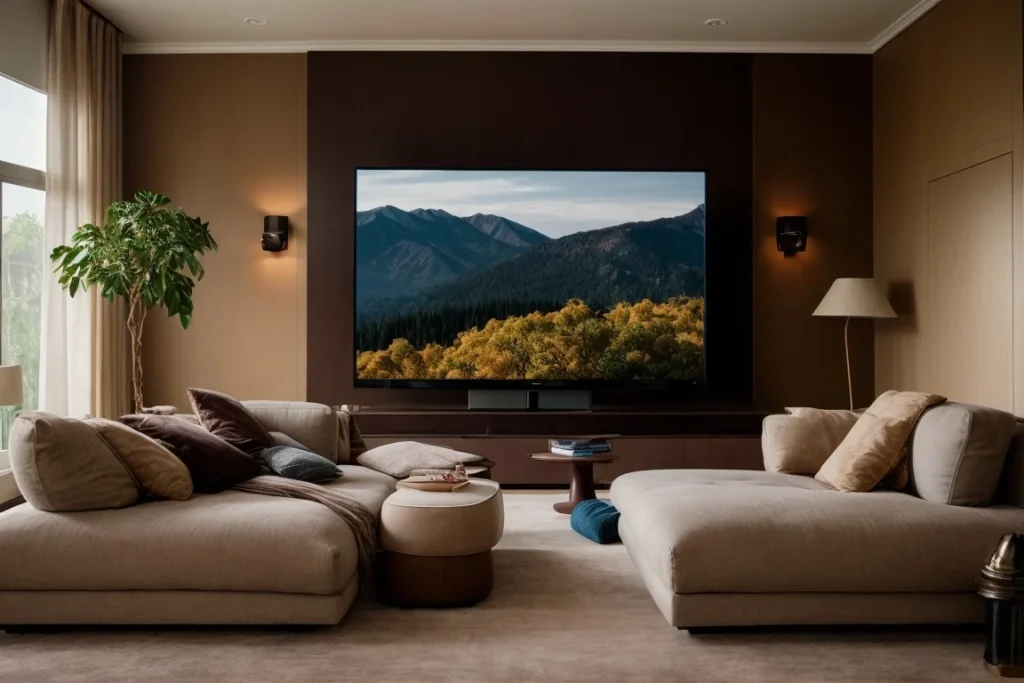
The most effective layout is placing both couches opposite each other against perpendicular walls, facing in towards the centrally located television. Pulling the couches slightly off the walls leaves a aisleway behind without blocking sightlines. Positioning a media console underneath the wall-mounted flatscreen anchors the arrangement while minimizing its dominance.
Another option is to place one couch facing the TV on the adjacent wall with a second couch at an angle. This creates both an ideal TV viewing zone and separate area for conversation. Just leave enough space between the couches for entry and exits.
Small Living Rooms: How to Arrange 2 Couches in a Small Living Room
Using two full-sized couches in a small living room requires careful space planning and choosing compact furnishings. Measure the room dimensions and outline each couch’s footprint on the floor with tape to visualize the fit. Couches with exposed legs and low profile arms maximize floor space visually.
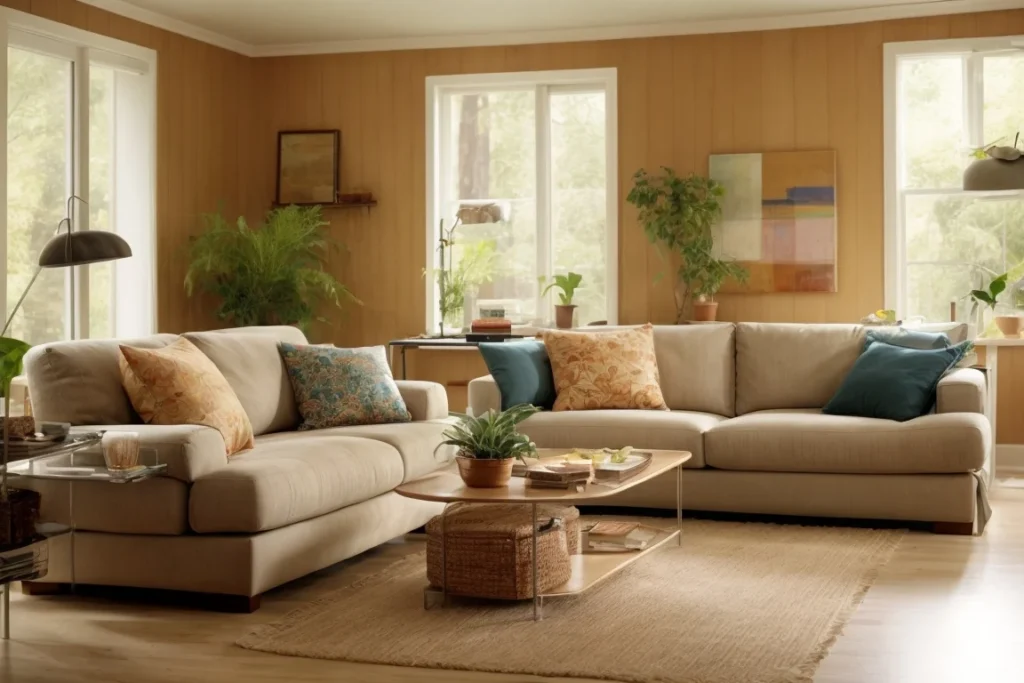
Place the couches against perpendicular walls in an L-shape to delineate the seating area from walking paths. Floating the couches away from the walls also helps a small room feel more expansive. Just allow at least 36 inches between and around the couches.
Loveseats, smaller than traditional couches, are a great space-saving option. Arranging two loveseats facing each other with a narrow coffee table in between creates intimate conversational seating without overwhelming a petite living room.
Mix and Match: How to Decorate with Two Different Sofas
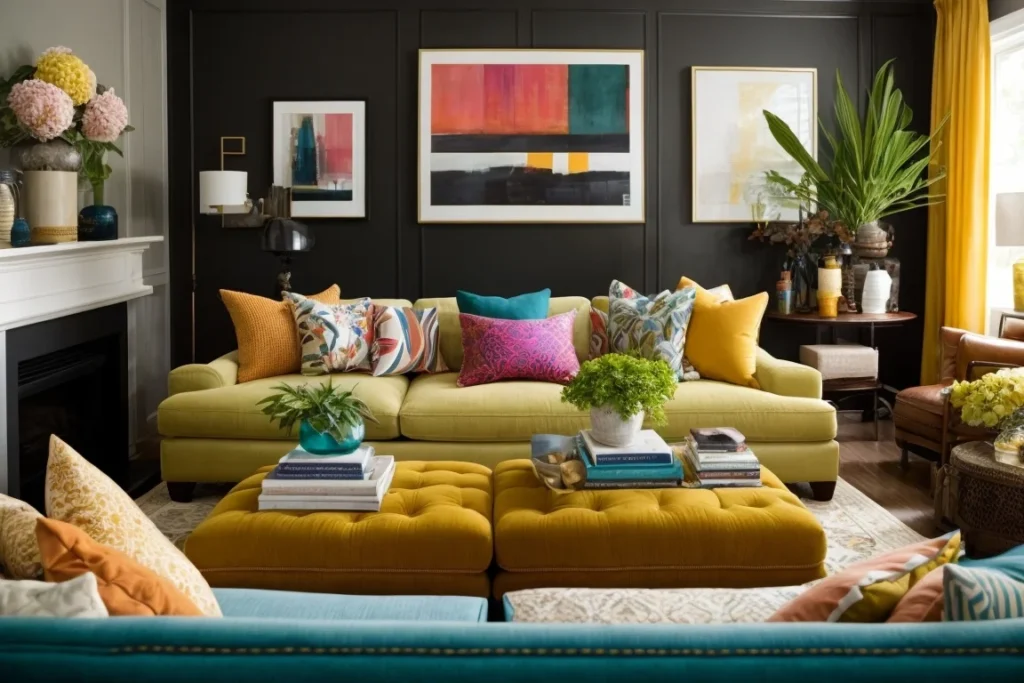
Creatively mixing two eclectic couches or sofas can infuse a living room with quirky personality. But the arrangement requires attention to detail to keep the mismatched pieces cohesive. Here are some tips:
- Repeat colors from each couch on the other to create a unified palette. For example, blue and orange sofas with blue throw pillows on the orange couch.
- Use slipcovers on one couch to match the primary color or pattern of the other.
- Layer same-toned area rugs underneath both couches to tie the spaces together.
- Choose couches with at least one coordinating detail like wood legs or shelter arms.
- Arrange around a shared focal point like a vibrant artwork or architectural feature.
The mix and match look works best when the different couches share aesthetic harmony while maintaining their unique flair.
Modern Styles: Modern Living Room with Two Couches
Modern style’s minimalist forms and sparing ornamentation beautifully complement the trend of using two couches or sofas in a living room. Contemporary couches often have exposed legs that lift the frame for an airier, floating effect.
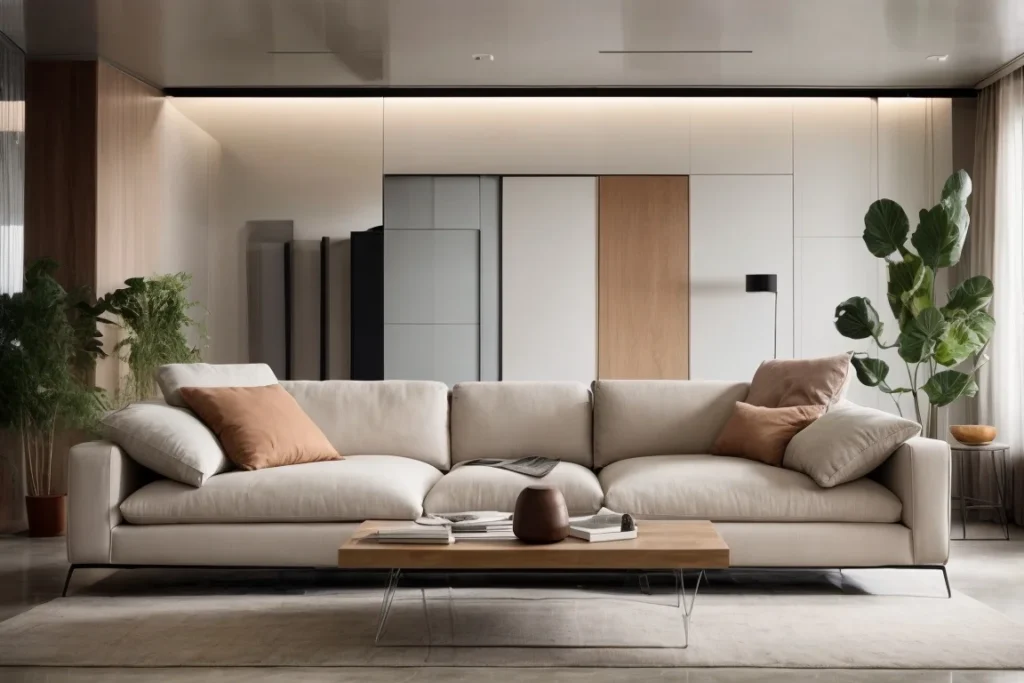
Place two slim-lined modern couches opposite, then angle each slightly to create dynamic lines. The asymmetrical arrangement feels fresh. Or try pairing one low-profile couch with a boldly-colored modular sofa for contrast.
Modern rooms keep decor simple; choose sleek coffee tables and a sculptural floor lamp between the couches. Limit accent pillows and layers. In the minimalist aesthetic, the clean-lined couches stand out elegantly against bare walls or concrete floors.
The 2-3 Rule: What is the 2-3 Rule for Sofa Placement?
The 2-3 rule provides helpful guidelines for optimally arranging furniture to room size. According to this interior design principle, your largest sofa or couch should measure roughly 2/3 to 3/5 the length of the wall you intend to place it against. This well-balanced proportion allows enough legroom without crowding the space.
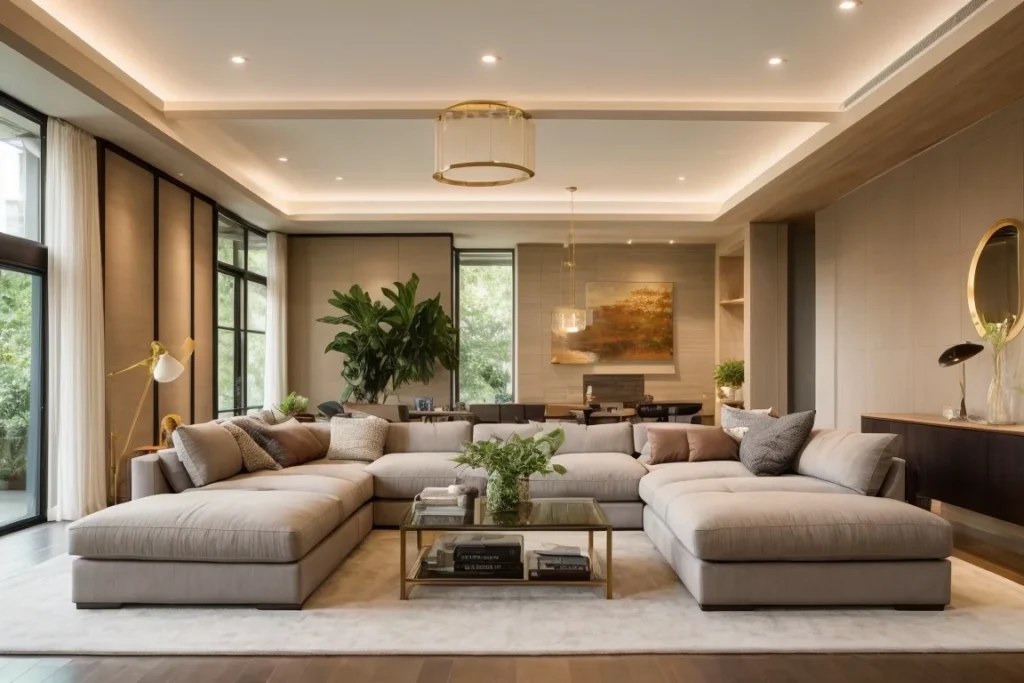
For example, if your couch is 90 inches long, the ideal wall length to place it against would be 140-150 inches. Anything wider leaves awkward dead space. The 2-3 rule helps determine couch size and ideal placement for a natural, proportional furniture layout. Apply it when arranging two couches to prevent an undersized or overwhelming feel.
Conclusion
Arranging two couches or sofas in a living room opens up endless possibilities for creating functional, aesthetically-pleasing layouts. When incorporating a pair of couches, pay attention to spatial planning and furniture proportions to avoid cramming the space. Identify the room’s natural focal point to anchor the couches in the optimal position for conversation and TV viewing ease.
